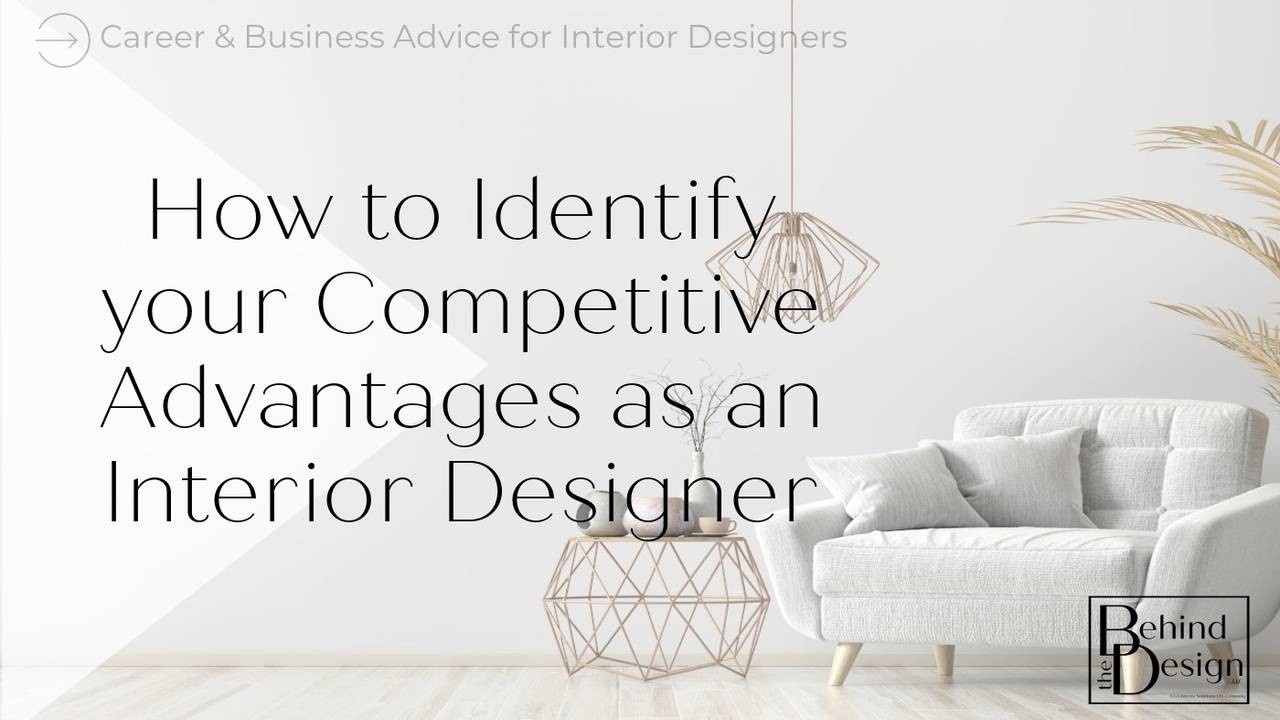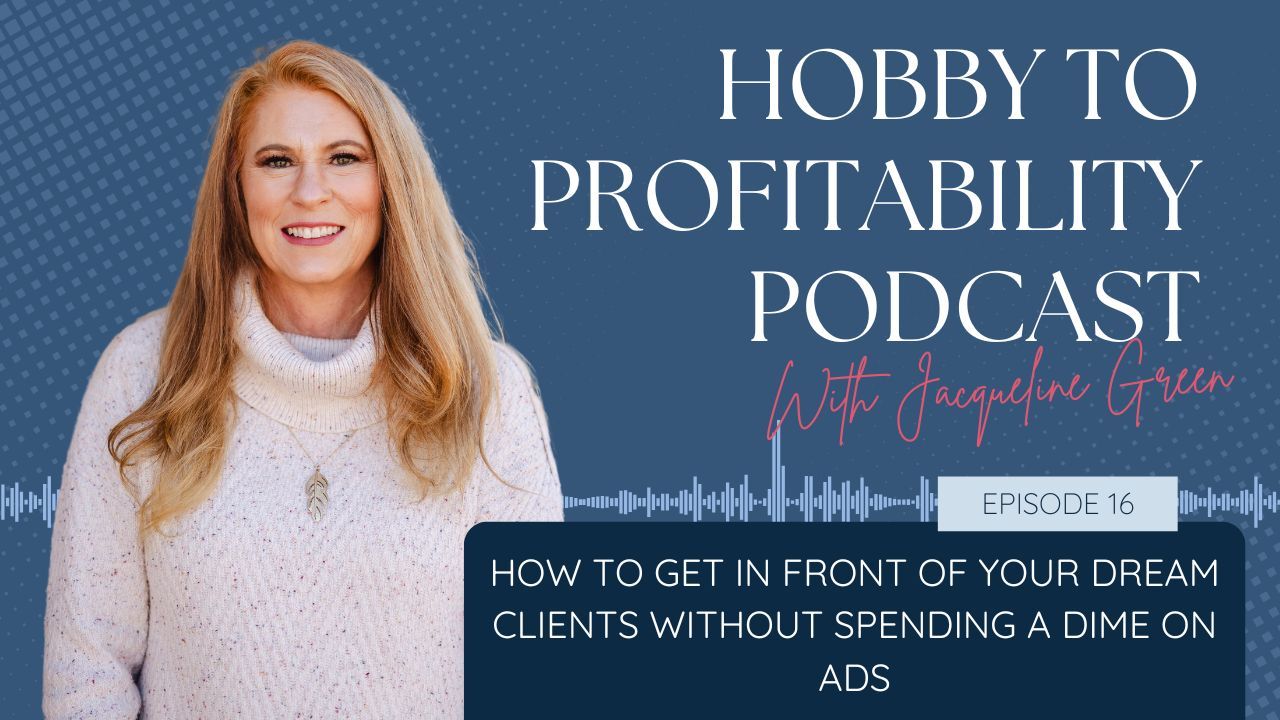How to Identify your Competitive Advantages as an Interior Designer
Jul 30, 2021
Three Competitive Strategies and How Each Impact an Interior Designers
In a marketplace where interior designers are plentiful, it can be tough to determine your competitive advantage over your competitors. But, when you are developing a marketing strategy or a brand strategy, it is increasingly crucial for you to recognize why a prospect would choose to purchase your services over another designer. In this article, we are discussing different competitive strategies and how to determine your competitive advantage.
I recently spoke with a realtor about why her clients hire her versus another realtor in the area. Her response was simply personality. She felt clients chose her because her personality matched theirs. Unfortunately, that is only a tiny part of the equation. Similarly, interior designers often believe that personality plays a big role, as well as style. Both of these professions are service-based. Professionals from each may find it hard to differentiate between themselves and another professional.
Three Main Competitive Strategies
There are essentially three main competitive advantages.
- Cost or Pricing Advantage
- Product or Service Differentiation
- Market Niche or Focus
Before you determine which bucket your design services fall into, let us discuss each one in more detail.
Cost or Pricing Advantage Strategy
Cost or pricing advantage is essentially offering a lower price for a product or service to attract customers. This strategy is a short-term move often used to increase revenue quickly.
There are several problems with this strategy for interior designers. First, we discount our value when we lower prices, essentially saying our services are not worth much. Second, customers will become to expect lower or discounted pricing.
Although this strategy may attract more people quickly, it will not help build a loyal client. Instead, it does the opposite. Prospects looking for lower pricing will always go with the lowest price. Therefore, next time they have a project, they will go with whoever bids the lowest. The low price consumer is looking for cost over quality. Notice, I didn’t say value but instead cost.
The pricing strategy is detrimental to your business growth in the long run. Since you are not building loyalty with clients, you will always be chasing new clients. Whereas many designers find the repeat customers are much more profitable. Additionally, new clients are typically more expensive to attract than repeat customers. If you are continually discounting your services, then it will be increasingly harder to make a profit.
There is another thing to keep in mind about cost advantage. When interior designers repeatedly lower their prices, we are training our customers to expect that lower price. Unfortunately, when many designers do this, it devalues our industry. No longer are our services viewed as a premium service; instead, we are just a commodity.
Product or Service Strategy
The second strategy is the product or service advantage. As an interior designer, this one is important to your success; however, don’t be confused by features and benefits. It can be hard to find differentiating features or benefits associated with our services.
For instance, our design services often include a construction plan, so to say we will deliver a construction plan is not an advantage. A designer's value is her expertise to ensure the plan is per code. The plan clearly shows the contractor the intended design intent, therefore reducing construction problems.
The benefit of your services might be reducing construction administration costs by ensuring constructions plans are created accurately as a designer. However, take it one step further in determining your competitive advantage in terms of client value. You minimize the client’s stress through the construction process. The feature was the construction document. The benefit was the experience and expertise to ensure the plans were correct. The value or advantage to the customer is the reduced stress during construction.
How do you determine your service advantages? First, use this simple chart and list all your services and products (features) in the left column. Then, in the middle column, you will determine how that benefits the client. Finally, in the third client, you will look at it through the client’s eyes to determine why it is of value to them.
|
Product | Service Features |
Benefits |
Value to the Customer |
|
ex: Construction Documents |
Reduce construction administration costs and change orders by ensuring construction plans are created accurately |
Minimize client stress during the construction process. |
The product or service you offer isn’t necessarily the advantage. Instead, it is the customer’s experience and perception that is the advantage. Therefore, your marketing efforts focus on the customer and what they will receive from working with you beyond the feature.
A great book about this is “Start with Why” by Simon Sinek. In the book, he goes through the importance of building loyal customers and employees by sharing the why first (minimize stress), then the how (reducing construction costs/change orders), and then the what (accurate construction docs).
Let’s not forget about our personality. We can plug that into our chart below.
|
Product | Service Features |
Benefits |
Value to the Customer |
|
ex: Type A personality |
Reduce delays and making it easier on the client by staying organized and continually following up with vendors and installation folks. |
Luxurious Experience |
Here are some facts that you may find interesting. According to a research study conducted in 2019, 73% of consumers are more likely to spend more money for good customer service. Another study conducted in 2018 found that customers are willing to pay 16 percent more for excellent service. If this is true, we know that we can charge more if we back it up with a great experience.
Check out: “Improving the Customer Experience Reinforces your Brand”
Niche or Focus Market Strategy
The niche or focus market strategy is another one that is increasingly important to an interior designer. When we look at a target market, we need to realize that a designer can not be everything to everyone. If you have a more modern flair, then you probably won’t attract a traditional client.
Check out: “How to Identify a Target Audience for Increased Profitability”
It is essential to understand who you are targeting and why. Then, you can focus your efforts on attracting your ideal client. For example, some designers may find a sweet spot with older clientele. These clients are often looking for “aging-in-place” design strategies. Your experience in “aging-in-place” design is a competitive advantage. You would use that experience to show how you can help your client stay in their home longer.
Another niche may be designing children’s rooms or nurseries. But, again, your target market would be younger professional couples interested in growing their family. You would not market your services to 65 years old man who is retiring and needs help with a bathroom remodel.
Keep in mind your talents, experience, and design style in looking for your niche or focus. First, identify the audience best suited for those talents, and then focus on that market.
Often, we think a competitive advantage has to do with pricing or a better product, but that isn’t necessarily correct. Interestingly, customers are willing to pay more for the experience and expertise you have to offer. Therefore, to identify your competitive advantages, you must look at them from the customer’s viewpoint. How are you helping them solve their problems?
Sign Up for Our Monthly Newsletter
Get helpful career, business, and design tips right in your inbox each month.
At Behind the Design, we are committed to building a stronger design community by reimagining education, training, and support for interior designers. Through our various software training options, educational articles covering everything from leadership to marketing, and soon Continuing educational courses, we are committed to helping you. Join our newsletter to get the latest education and training updates.









